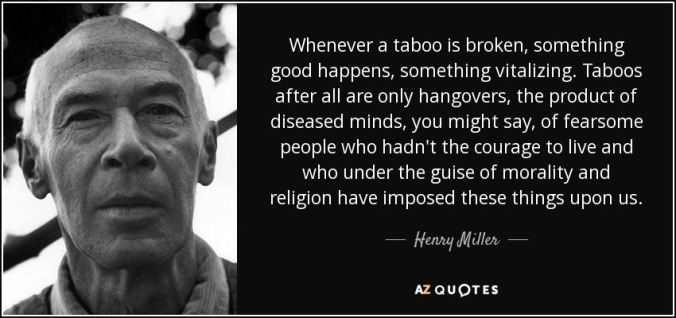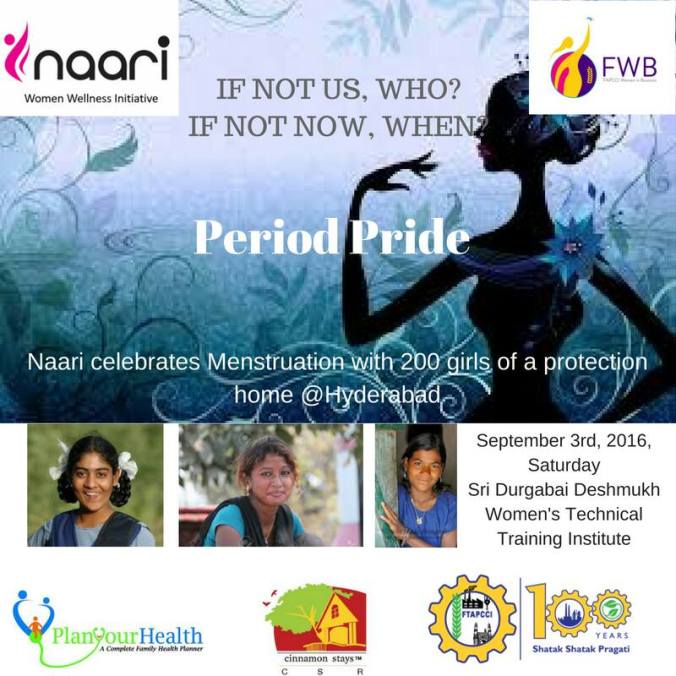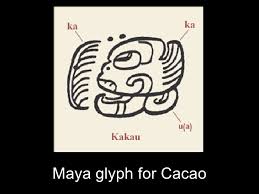Write Tribe has come up with a topic not many discuss – Infertility. Couples are reluctant to talk about it because they feel depressed and hopeless. They also want to shield themselves from prying eyes which only want some food for gossip. Yes, it is our society that has made it impossible for couples who are struggling to have kids, to live peacefully. There are expectations everywhere, and there is always talking behind the back.
Years ago, with lack of knowledge, it was always a woman who bore the brunt of it all. It was always ‘her’ mistake. There was something ‘wrong’ in her if a couple could not have kids. No body questioned the husband or the son-in-law. Just like Eve had been held responsible for Adam’s eating the apple, it was as if only the woman was at fault always.
Not much has changed despite education and medical advancement. Woman is still held largely responsible for childlessness. Men with their inflated egos, and their mothers with their flawed and misplaced prides, refuse to even consider male infertility a possibility. The result is that many marriages break, couples are torn apart and ignorance prevails.
Infertility is not a bane. Just like any other ailment, it too is a medical condition that can be corrected through expertise. But to be cured, it needs to be first recognized. In many cases, it is left un-diagnosed owing to superficial pride and bloated egos. Statistics reveals that male infertility is difficult to diagnose and cure due to various reasons, despite the fact that it is the underlying cause of couple not bearing children in almost half of the cases. Men wear this thick cloak of masculinity and become touchy when asked to be tested. “Nothing’s wrong with me”, is all they can say.
But it does exist. And in order to seek help, one needs to come out and talk.
सींचा कोमलता से मैंने
क्यारी में न फूल खिला
सब बगिया को दोषी कहते
माली को क्यों भूल गए ?
Gitanjali Banerjee’s Infertility Dost is there to help you #OpenUp. A “regular, middle class woman” who struggled through a long and tiring period of infertility, Gitanjali has decided to bring it out in the open and discuss. She is blessed with kids now but her journey has not been easy. She realizes how important it is to be able to confide in someone, to be able to get the right help and the right care. That’s why, the name may sound like an oxymoron. Infertility has not many ‘friends’ (dost) but a whole lot of nosy critics. Gitanjlai intends to reach out to those in need to give them love, care and the required medical assistance.
You can help Gitanjali too.
Share, write, discuss.
Be an Infertility Dost !
In my circle of friends and family, there are a few who have had trouble bearing children. Some were successful and some were not. But in most of the cases, they have kept it quite. A relative of mine underwent a long and painful surgery without even confiding in her parents. I often wonder why she did so. Perhaps, she did not want to raise their hopes because she had already struggled with this for almost her entire married life. Now in her forties, she must have felt that is would be even more difficult to conceive. Or perhaps, she wanted to protect herself and her husband from unwanted questions. Whatever the reason, I respect her need for privacy on the matter.
The need/desire for children is something natural. But I feel strongly that as a human being, we have no right to pass judgement on the lives of others. We ought not to comment, criticize, give unwanted and often senseless advice to others, especially on personal matters. If someone confides in us, we ought to respect that decision and act in their best interest. Often, with lack of knowledge, we can kill someone’s hopes. We have no right to do that. The best solution is to help the friend in need be seeking appropriate medical help when necessary rather than just trivializing the issue or spreading rumors about it. Words and mentalities hurt in unimaginable and irreparable ways often.
Representing Infertility – Letting it out
For my post, I have picked the issue of ‘representation’ of ‘infertility’ in literature and film. I have chosen a short story written by a writer whose thinking was way ahead of her times and a movie that is contemporary to us. In the former, the saga is one of despair and anguish, and in the latter there is humorous rendering of the issue and lots of hope. Both try to bring the topic out for discussion. To solve a problem, one first needs to see it, accept it. Progressive minds often help in exposing and articulating a subject that others will usually try to hide. And therein lies hope. When writers and film-makers pick up controversial topics, they are doing much more than just seeking attention. They are coaxing people out of their comfort zones to think, and interrogate.
Female Infertility – Depicting Injustice through Irony in Amrita Pritam’s बू (Stench)
It would have been a cozy night if I had not decided to read anything. But my kids were sound asleep and I yearned to read something thought-provoking. Looking through my collection of books, I came across Amrita Pritam’s collection of short stories in Hindi, titled सत्रह कहानियाँ (Seventeen Stories). I randomly selected a story titled बू (Stench). As I flipped the two pages of this short story, my heart broke. It was fiction, yes. But it was a fiction that was a reality for many many couples out there – childless couples.
The story revolves around a childless couple Guleri and Maanak. Seven years into marriage, Maanak’s mother has given up hopes on her daughter-in-law. As Guleri goes for a visit to her parents’ village during harvest time, Maanak’s mother brings in another woman to replace Guleri. Maanak’s protests are feeble, voiceless. He has tried to stop his wife from leaving but is incapable of standing against his mother. He marries again. A few days later, Maanak’s friend announces the death of Guleri. She has set herself on fire after hearing about Maanak’s marriage. Maanak is shattered. In the meantime, his second wife gives the much-awaited news. Maanak’s mother is blind to the agony her son is going through. Guleri’s death has had no impact on her. She places Maanak’s new-born son in his lap, hoping, in fact almost certain, that the child will knock in some ‘sanity’ in his son’s mind. But the moment Maanak stares at the little bundle lying in his lap, he screams in despair, “Take him away….take him away….he stinks of kerosene…”
The story ends.
Pritam’s story left me pondering on the many aspects she had touched here. She had picked up a topic that not many would be comfortable to discuss or even acknowledge. The male protagonist was depicted powerless and the woman in the house was, ironically enough, a heartless mother. She wanted her son’s child so badly that her own maternal love was overshadowed by her greed.
Who was the culprit here?
The mother?
The society?
Or Maanak?
Or all of them?
Yes, all of them. Maanak was not a man enough to brave the storm. Or perhaps, secretly he too yearned to have a child and thus gave in to his mother’s demand. His mother was a victim of the society she lived in, which looked down upon childless women with disrespect and hatred. The society considered woman only as a child-carrying vessel. She ought to be discarded if she did not function well.
Pritam’s story highlighted the rampant injustice of our society through a flawless use of irony.
That a woman was instrumental in bringing about the death of another woman, was a significant element of the story. It reflected what actually happens out there to countless women who are unable to give birth, who are unable to fulfill the greedy desire of carrying the lineage.
It highlighted one more thing – #Silence.
Had Guleri and Maanak been able to talk about this to someone, and also to each other, the ending would have been hopeful. But the inability to confide even in your partner pinpointed the extreme helplessness of living in a callous society.
Male Infertility – Talking Taboo through Humor in Vicky Donor
Vicky Donor was an instant hit. Audience laughed heartily. Everyone seemed to celebrate the ‘Aryan’ boy’s immaculate intelligence and good looks and the doctor’s discerning eye. Babies came. There were smiles everywhere. Was it just a feel-good movie meant to earn bucks for the film director? No. There was much more happening. Director Shoojit Sircar had managed to bring a #taboo topic out of the closet. In a society which failed to even concede to the fact that male infertility existed, the movie managed to make people laugh and accept it as a reality. The last scenes were meant to drive the point home. There was hope for everyone. And for those who could not bear children on their own, there were alternatives like artificial insemination and sperm donation. Interestingly, the protagonist who made parenthood a possibility for many out there, ended up having no child of his own. But the movie ended not on despair. It gave the message of hope and happiness.
Children, or no children, a couple could still find happiness and love in each other. One had to just be ready to accept.
And that was for me the most beautiful message from the movie.
For some, it may not work but still…..
There are so many little kids, who for some reason or the other have been separated from their family. They yearn for love. They long to belong. They ache for that gentle affection that only parents can give. You can be their parent. One does not need to bring a child biologically to the world to feel that love and sense of belonging. That attachment can come from being together, living the high and low moments of life together.
Please do not give up hope. Adopt a child. Sponsor someone’s education. Give someone a reason to smile. Become someone’s reason to smile. Don’t care about the society which frowns upon your decisions. It is just not worth it.
दूर कहीं पर पनप रहा
एक फूल अकेला गुमसुम-सा
बगिया छूटी जाने क्यों उसकी
जाने क्यों उसका माली रूठा
तुम प्रेम स्पर्श से पुलकित कर
उसको गर फिर से महका दो
मदमस्त सुगन्धित हो जाएगा
सूना आँगन भी तुम्हारा
This blog is to #SpreadAwareness about Infertility through Infertility Dost, India’s first website that facilitates couples to brave infertility with support and knowledge. You can find other links on Write Tribe.









